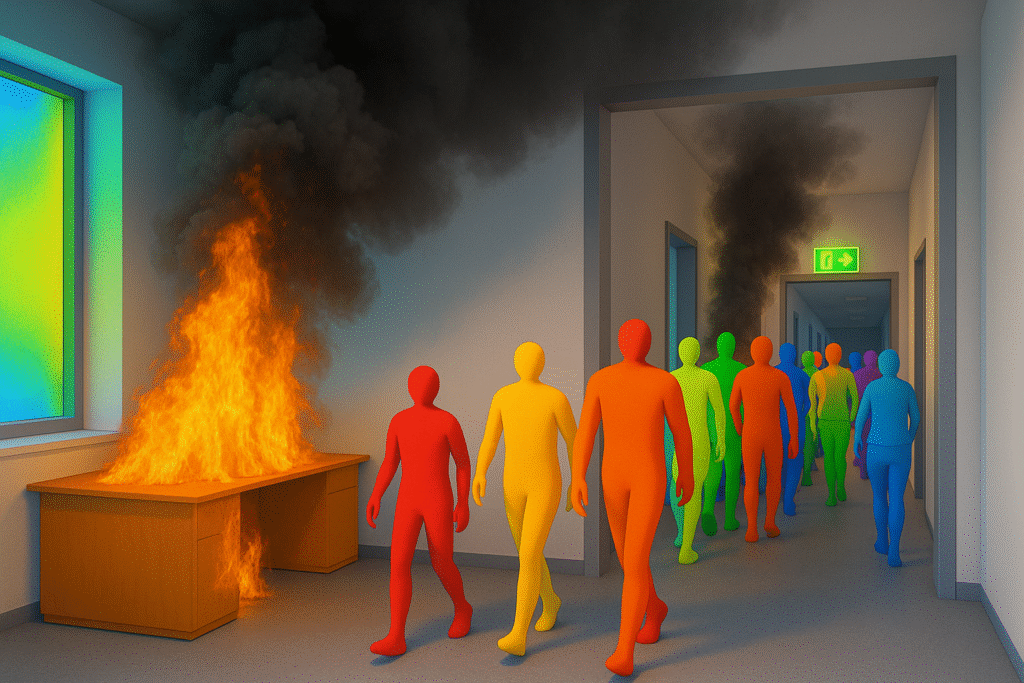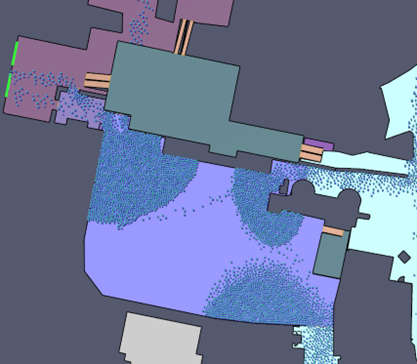
In the rapidly growing cities of the Middle East—home to soaring skyscrapers, expansive malls, and bustling transportation hubs—fire safety is a critical concern. It is no longer enough to simply follow prescriptive codes; modern design demands performance-based solutions that actively protect lives. This is where advanced technologies like fire and smoke modelling come in—enabling engineers and safety consultants to assess risk, plan emergency responses, and design safer structures from the outset.
Fire and smoke modelling is a simulation-based technique that predicts how fire, smoke, and heat will behave during an emergency. Using advanced software tools (FDS, Pyrosim), fire safety engineers can visualise how flames spread, how smoke travels through corridors and stairwells, and how temperatures rise in different building areas.
This process allows professionals to:
In essence, fire modelling is a proactive safety measure—it helps you prevent disasters, not just respond to them.
Cities such as Dubai, Riyadh, and Doha feature some of the most complex structures in the world. High occupancy rates, mixed-use functions, and dense spatial arrangements create a unique set of fire safety challenges.
Additionally, local environmental factors—like extreme temperatures and the extensive use of HVAC systems—can alter how smoke and fire behave. In response, many developers turn to a fire modelling consultancy in the UAE that combines local experience with international best practices to develop region-specific safety strategies.
Computational Fluid Dynamics (CFD) lies at the heart of modern fire and smoke modelling. Tools such as Fire Dynamics Simulator (FDS) and PyroSim use CFD to model air flow, smoke dispersion, and heat transfer with high accuracy.
With CFD modelling, consultants can simulate:
This data supports better decisions on the placement of alarms, sprinklers, and smoke vents—improving both compliance and real-world safety.

Understanding human behaviour during an emergency is just as important as understanding the fire itself. This is where evacuation modelling with Pathfinder becomes essential.
Pathfinder is an advanced simulation software that replicates how people move through a building in a fire scenario. It helps engineers:
For locations like stadiums, metro stations, or malls, Pathfinder allows consultants to verify that stairwells are wide enough, signage is effective, and escape times meet regulatory requirements—even under stress conditions.
Testing Real-World Scenarios Before Construction
One of the biggest advantages of fire and smoke modelling is the ability to test building designs under realistic conditions—before construction begins. Instead of relying solely on prescriptive codes, performance-based fire engineering allows for flexible, yet robust, safety designs.
Take, for example, a stadium in Dubai designed for 50,000 spectators. A fire modelling consultancy in the UAE can run simulations to assess worst-case scenarios—such as fire outbreak during peak occupancy, wind-driven smoke propagation, or delayed detection. These insights lead to safer, data-driven decisions around ventilation and evacuation.
Key Benefits of Fire and Smoke Modelling
Implementing fire and smoke simulations provides significant advantages:
These tools are not just about compliance—they are critical for protecting lives and improving building performance.
The Future of Fire Safety in the Middle East
As the region embraces smart buildings and AI-driven systems, the future of fire safety lies in real-time, dynamic modelling. Technologies such as digital twins and live sensor data will soon allow fire systems to adapt on the fly—rerouting occupants or adjusting airflow based on actual conditions.
To stay ahead, developers will need to collaborate with experts skilled in both traditional fire engineering and cutting-edge simulation tools.
Conclusion
Fire and smoke modelling has become essential for designing safe, efficient buildings in the Middle East. From CFD simulations to evacuation modelling with Pathfinder, these tools allow engineers and consultants to plan for the unexpected—ensuring faster response times, safer evacuation, and smarter building systems.
Lava Consultants is a trusted fire modelling consultancy in the UAE, offering expert fire engineering solutions tailored to regional needs. With deep technical experience and a commitment to international standards, Lava helps developers implement proactive, compliant, and reliable fire safety strategies.
© 2025 Lava Consultants. All rights reserved